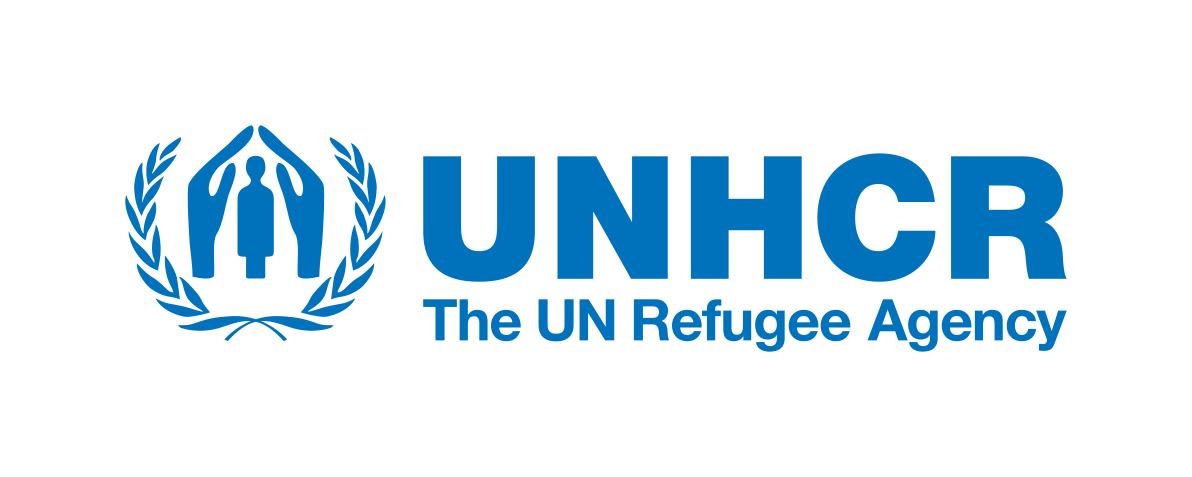3ème Conférence de recherche sur les déplacements forcés
Date: 19-21 septembre 2024
Lieu: Abidjan, Côte d’Ivoire et en ligne
English Version
Organisée en collaboration avec l’Agence des Nations Unies pour les réfugiés, la Banque mondiale et l‘École africaine d’économie (ASE), le Centre conjoint de données sur les déplacements forcés (JDC) de la Banque mondiale et du HCR a le plaisir d’annoncer sa 3ème Conférence de recherche sur les déplacements forcés qui aura lieu du 19 au 21 septembre 2024.
Le thème central de la 3ème conférence s’articule autour des thématiques suivantes:
- Analyse socio-économique des populations déplacées de force – en particulier les personnes déplacées à l’intérieur de leur pays et les apatrides.
- Analyse socio-économique des déplacements forcés en Afrique subsaharienne
- Innovations liées aux données dans la recherche sur les déplacements forcés (par exemple, échantillonnage, collecte de données)
- Impact des données et des faits probants sur les opérations et politiques dans les contextes affectés par le déplacement forcé.
- Solutions panafricaines pour la réintégration et l’inclusion des communautés déplacées de force.
Program
Séance d’ouverture et mots de bienvenue
Kaba Nialé, Ministre de l’Economie, du Plan et du Développement, Côte d’Ivoire
Abdouraouf Gnon-Konde, Directeur, Bureau régional pour l’Afrique de l’Ouest et du Centre, HCR
Tony Verheijen, Responsable des opérations, Côte d’Ivoire, Banque mondiale
Séance sur les politiques – Mise en contexte
Leonard Wantchekon, Fondateur et Président de L’École africaine d’économie
Soukeyna Kane, Directrice, Fragilité, conflits et violence, Banque mondiale
Riadh Ben Messaoud, Coordonnateur principal du Bureau de coordination des États en transition, BAD
Abdouraouf Gnon-Konde, Directeur, Bureau régional pour l’Afrique de l’Ouest et du Centre, HCR
Modératrice : Aissatou Maisha Dicko, Directrice du Centre, JDC
Session 1 – Entreprises et entrepreneuriat dans le contexte des déplacements forcés
Thomas Ginn – Mentorat pour les petites entreprises : Exemple de l’Ouganda, (Paper) (Presentation)
Maria Jose Silva-Vargas – Contact sur le lieu de travail et cohésion sociale : Résultats d’une étude expérimentale en Ouganda (Paper) (Presentation)
Tara Mitchell – Soutien à l’entrepreneuriat pour les réfugiés et les communautés d’accueil dans un contexte fragile : Résultats d’un essai randomisé au Niger
Modérateur : Volker Schimmel, Chef du service mondial de données, HCR
Session 2 – Aspects relatifs à la santé et au genre des déplacements forcés
Sandra Rozo – Programmes de régularisation et fécondité des migrants forcés : Eclairages d’une étude par panel auprès des migrants vénézuéliens en Colombie (Paper) (Presentation)
Laura Muñoz Blanco – Le vaccin en mouvement et la guerre contre la polio (Paper) (Presentation)
Murat Kirdar – Les effets de la guerre civile et de la migration forcée sur la violence conjugale parmi les femmes syriennes réfugiées en Jordanie (Paper) (Presentation)
Modératrice : Nessa Kenny, Innovation pour lutter contre la pauvreté
Panel 1: Utilisation des données dans les politiques relatives aux personnes déplacées internes
Robert Piper, Conseiller spécial auprès de l’AGNU pour les solutions au déplacement interne
Zahra Abdi Mohamed, Directrice de la réduction de la pauvreté et des solutions durables, Somalie
L’Honorable Virginie Baïkoua, Députée et ancienne ministre de l’Action Humanitaire et de la Solidarité, République Centrafricaine
Thuraiya Elwerfalli, Cabinet du Premier ministre, Gouvernement d’unité nationale, Libye
Modératrice : Maja Lazić, Directrice adjointe, JDC
Session 3 – Inclusion des personnes déplacées de force : conséquences sociales, politiques et économiques
Henrique Pita Barros – Le pouvoir du dialogue : Déplacement forcé et intégration sociale dans un contexte d’insurrection islamiste au Mozambique (Paper) (Presentation)
María José Urbina – Effets électoraux de l’intégration des migrants forcés : Résultats d’une étude menée dans un pays du Sud (Paper) (Presentation)
Bailey Palmer – Subventions au logement et bien-être : Prévisions et données expérimentales provenant de réfugiés syriens en Jordanie
Modératrice : Julia Lendorfer, Spécialiste principal du développement social, Banque mondiale
Récapitulatif du jour 1
Quy-Toan Do, Codirecteur (Rapport sur le développement dans le monde 2023) et économiste principal, Économie du développement
Session 4 – Attitudes et politiques envers les réfugiés
Colette Salemi – La concurrence perçue sur le marché du travail accroît-elle les préjugés entre les réfugiés et les populations hôtes? Résultats d’études menées en Ouganda et en Éthiopie (Paper) (Presentation)
Thomas Ginn – Attitudes et politiques à l’égard des réfugiés : Résultats provenant des pays à faible revenu et à revenu intermédiaire (Paper) (Presentation)
Mae Macdonald – Attitudes à l’égard des politiques d’accueil et d’intégration des réfugiés : Exemple du Kenya
Modérateur : Bassirou Chitou, L’École africaine d’économie (ASE)
Session 5 – Dévoiler les conséquences inattendues et cachées du déplacement forcé
Omar Hammoud-Gallego – Politiques des visas et frontières poreuses : Résultats d’études quasi expérimentales sur leurs effets à court et à long terme au Pérou
Christopher Blair – Retour des réfugiés et conflit : Données issues d’une expérience naturelle (Paper) (Presentation)
Jonathan Lain – Comparaison entre les personnes déplacées internes et celles restées sur place : Résultats d’une étude en République centrafricaine (Paper) (Presentation)
Modératrice : Linguère Mbaye, Économiste, Banque africaine de développement
Panel 2: Combler le fossé – Initiatives visant à rapprocher la recherche et la formulation de politiques
Brèves présentations : Initiatives pour combler le fossé
Patricia Escalante, Data Scientist, Fonds monétaire international
Domenico Tabasso, Economiste principal, JDC
TABLE RONDE :
Luis Felipe López-Calva, Directeur mondial du pôle Pauvreté et équité, Banque mondiale
Elizabeth Tan, Directrice de la Division de la protection internationale, HCR
Rose Oronje, Directrice des politiques publiques et de l’application des connaissances, Institut africain pour les politiques de développement
Modérateur : Guy Grossman, Professeur de politique mondiale et de relations internationales, Université de Pennsylvanie
Session 6 – Effets des programmes de régularisation sur le marché du travail
Julie Bousquet – Accorder des droits de travail aux réfugiés nuit-il à leurs communautés d’accueil ? Exemple de la Jordanie
Craig Loschmann - Effet sur le marché du travail de l’octroi d’une amnistie aux réfugiés et migrants vénézuéliens en République dominicaine (Paper) (Presentation)
Angie Mondragón – Déclassement professionnel des migrants vénézuéliens en Colombie : les permis de travail améliorent-ils la mobilité professionnelle ? (Paper) (Presentation)
Modératrice : Raimi Fassassi, enseignant chercheur chez Ecole nationale supérieure de statistique et d’économie appliquée (ENSEA)
Communication principale – Réfugiés, santé des enfants et transmission du paludisme en Afrique
Anna Maria Mayda, Professeur d’économie, Université de Georgetown (Presentation)
Récapitulatif du jour 2
Quy-Toan Do, Codirecteur (Rapport sur le développement dans le monde 2023) et économiste principal, Économie du développement
Session 7 – Bien-être et santé mentale
Efobi Uchenna – Explorer les effets de contagion des camps de déplacés internes sur le bien-être des enfants des communautés d’accueil (Paper) (Presentation)
Andrés Moya -Santé mentale des soignants et développement de la petite enfance : données expérimentales provenant d’une zone de conflit (Paper) (Presentation)
Emma Smith – Stigmatisation et couverture sociale : une expérience de soins de santé mentale dans les réseaux de réfugiés (Paper) (Presentation)
Modérateur : Quy-Toan Do, Économiste principal, Groupe de recherche sur le développement, Banque mondiale
Communication principale – Politique des réfugiés et intégration des réfugiés
Guy Grossman, Professeur de politique mondiale et de relations internationales, Université de Pennsylvanie (Presentation)
Séance de clôture
Olivier Guillaume Beer, Représentant en Côte d’Ivoire, HCR
Aissatou Maisha Dicko, Directrice du Centre, JDC






